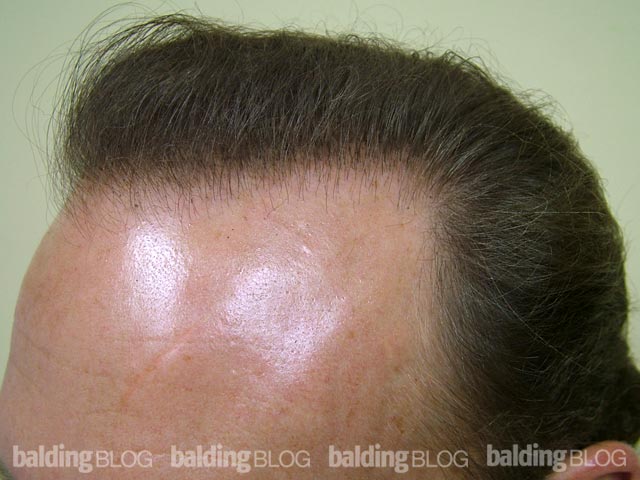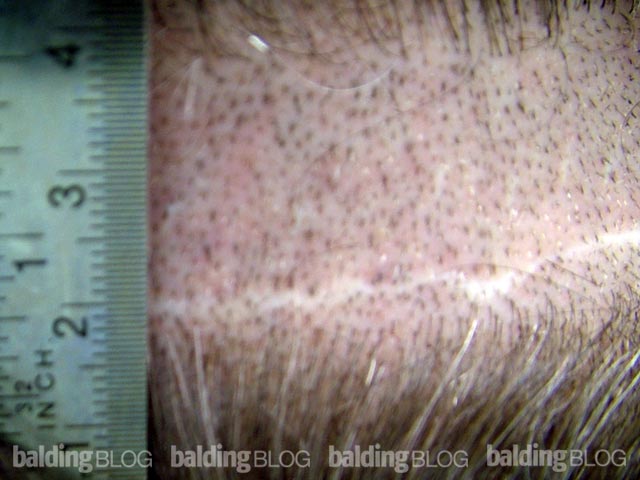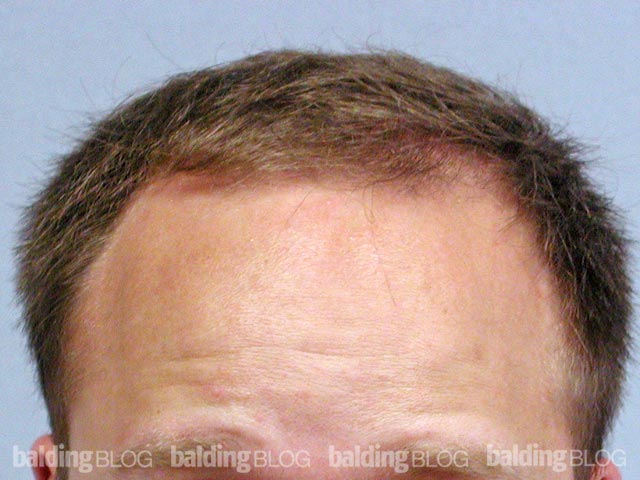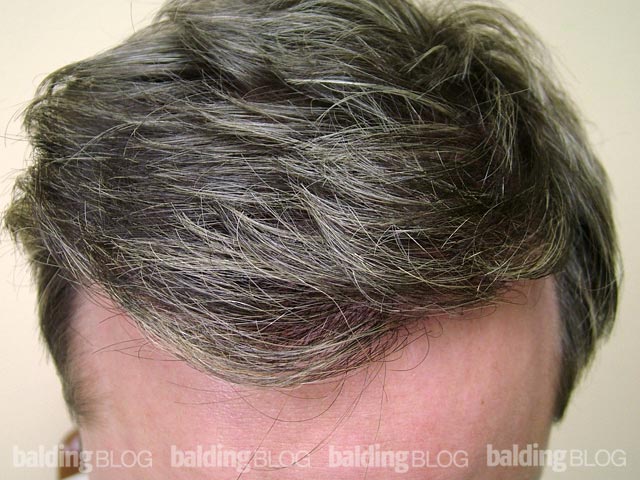This patient had 1414 grafts almost 12 years ago to camouflage the obvious grafts in his frontal hairline and in the process, bring down his hairline into its normal position. His old transplants were placed too high and looked too pluggy. This is a nice result and a good demonstration of the value of camouflage when used properly. The photo on the left is before I performed any transplants on him (note the plugs there on the close-up), and the photo on the right is over a decade later. The key to the camouflage was to create a feathering zone of one hair grafts irregularly placed and spaced apart in front of the plugs, then with two hair grafts placed closer together, the transition to the old plugs was so gentle that the plugs were hidden from view. The patient was thrilled with the results.
When we wrote the original articles on repairs for the medical journals, it was taken from experiences like this man had. Today, we can harvest hair from the big plugs (not shown in these photos) as well as use camouflage as we did here. When this repair was done in 1995, the unfortunate standard of care at the time was still the ‘plugs’ that produced the corn row deformities. Surgeons were trying to repair the rough work by putting even more large grafts in between the larger grafts, which only compounded the problem. Fortunately today, few of these pluggy procedures are done and much of what we published has become today’s standard of care for repairs. To see the original work we did on the subject and the publications, look at: NewHair.com – Repair (search).
Click the photos to enlarge.







 From
From 



 An amazing result in one session is doable in some patients. There are many factors that lead to such results, including the hair texture and thickness of the hair shaft. Remember that “supply and demand†is important and your scalp must be flexible enough to handle these higher graft numbers. If your scalp has good laxity and you have a good hair density, you are a good candidate to get high numbers, which is needed to cover a large area. Hair characters including diameter, color, and waviness also play an important role in the final results. The best way to predict this is by visiting a hair doctor. If you’re in California, I’d suggest making an appointment with us and to come to an
An amazing result in one session is doable in some patients. There are many factors that lead to such results, including the hair texture and thickness of the hair shaft. Remember that “supply and demand†is important and your scalp must be flexible enough to handle these higher graft numbers. If your scalp has good laxity and you have a good hair density, you are a good candidate to get high numbers, which is needed to cover a large area. Hair characters including diameter, color, and waviness also play an important role in the final results. The best way to predict this is by visiting a hair doctor. If you’re in California, I’d suggest making an appointment with us and to come to an 




